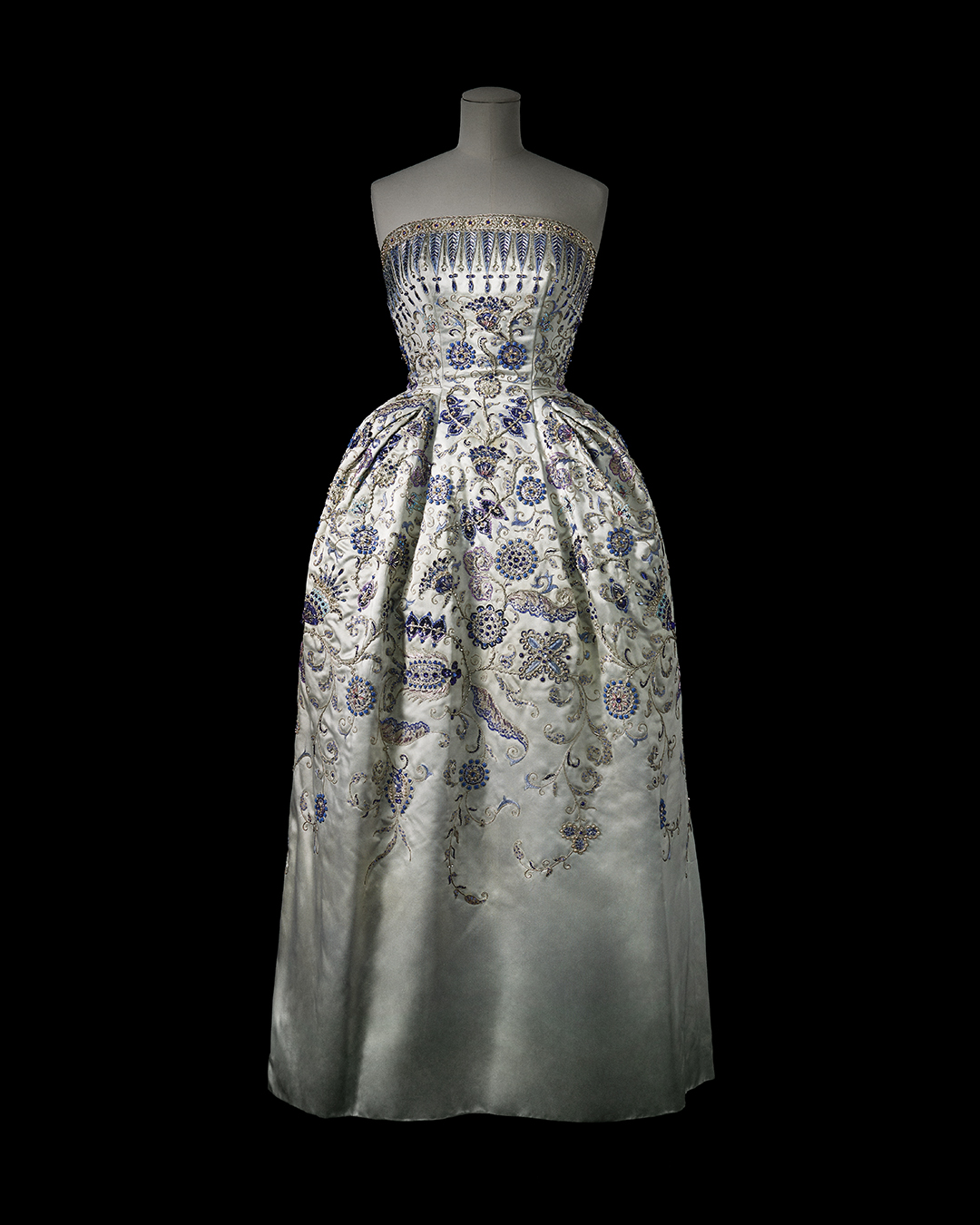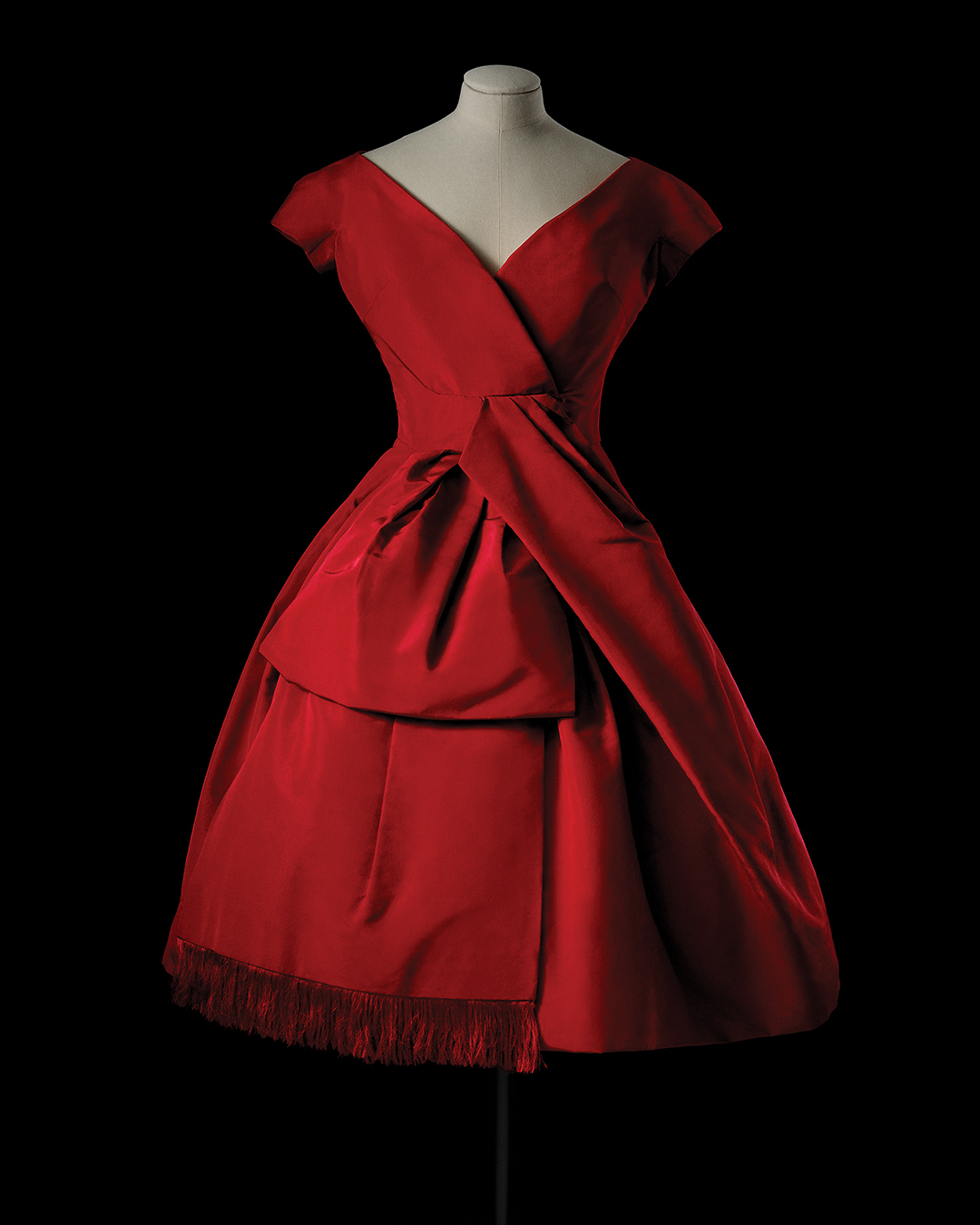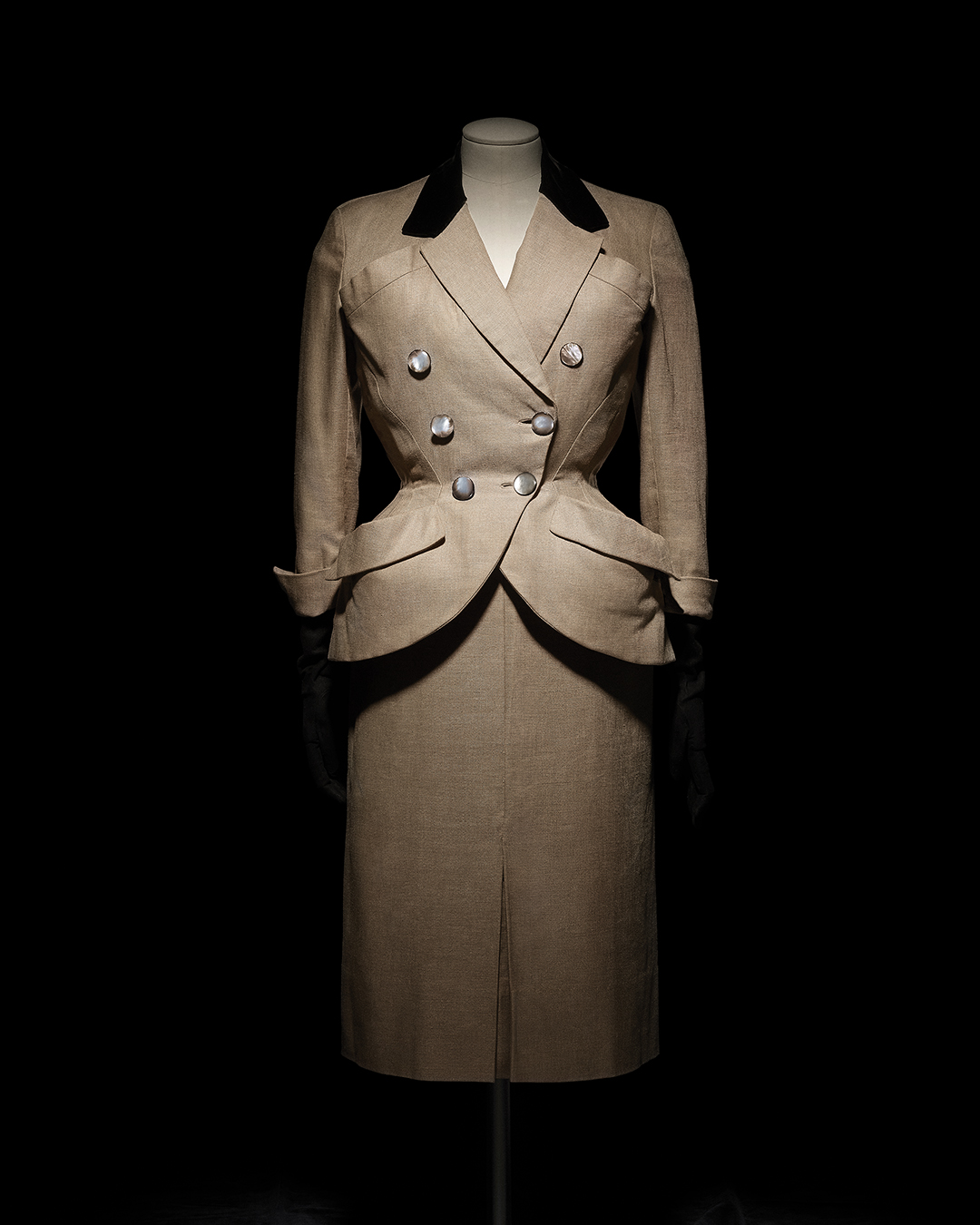Christian Dior is arguably the most influential couturier from the golden age of dressmaking. In February 1947, two years after the end of the Second World War, the master of ultra-feminine shapes presented his first haute couture collection in Paris at the age of 42, and re-established the war-ravaged city as the centre of the couture industry.
Using swathes and swathes of the richest fabrics to create exaggerated full skirts, wasp-waisted silhouettes, and soft shoulders, Monsieur Dior swept away years of boxy, masculine, fabric-conserving shapes that were the result of wartime devastation. His revolutionary “New Look,” a term coined by the influential editor-in-chief of Harper’s Bazaar, Carmel Snow, sold a dream of the good old days when women could afford to be extravagant and deliberately glamorous.

This winter, in celebration of the House of Dior’s 70th anniversary, the Royal Ontario Museum is honouring the brilliance behind the iconic Frenchman’s short-lived but powerful decade of creations—from 1947 until his unfortunate death in 1957—with a unique exhibition.
Occupying the museum’s Patricia Harris Gallery of Textiles & Costume, the retrospective, entitled simply “Christian Dior,” features over 40 breathtaking dresses drawn from the ROM’s extensive collection, and loans from the museum-worthy Dior Heritage archive in Paris. “Platforms showcase the ensembles, which are divided and posed in a logical way from daytime to late afternoon to cocktail to eveningwear,” explains Dr. Alexandra Palmer, the ROM’s senior curator. Embroidery samples, accessories, beauty products, and jewellery housed in glass cases around the gallery periphery augment the visitor experience, and display the true might of the multi-billion-dollar empire.

“This exhibition is conceived from the ROM’s permanent collection, which has been donated in large part from private wardrobes, mainly by women from Toronto and Montreal who wore these dresses to important social events,” shares Palmer. “It’s both a global and local story.”
By focusing on the early years of the 70-year old brand, Palmer’s goal in mounting the exhibition was to offer mesmerizing insight into the creative process and mechanics of the Paris haute couture industry during the 1950s, and to explore why Dior’s groundbreaking lines, masterful cuts, and luxury textile and embroidery choices laid the foundation for the fashion house’s global success.

The retrospective also pays tribute to the unsung heroes behind many of its sartorial masterpieces. “There were an incredible number of artisans who worked and supported the house. Dior was the man at the top of the pyramid, but underneath him, there were many people and industries with incredible creativity,” says Palmer. “The number of decisions made by the hundreds of people that ultimately created one design is breathtaking, and I’ve tried to name as many people as possible,” she continues.
For the seasoned curator, it’s this complexity of the couture world she hopes visitors will truly take in. “It makes people think in a different way, and appreciate fashion beyond just shopping. It certainly is a craft.”
“Christian Dior” is on view at the ROM until March 18th, 2018.
